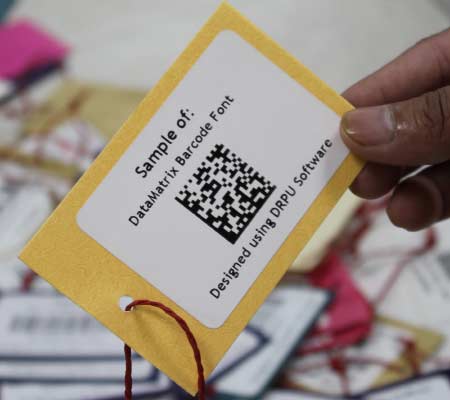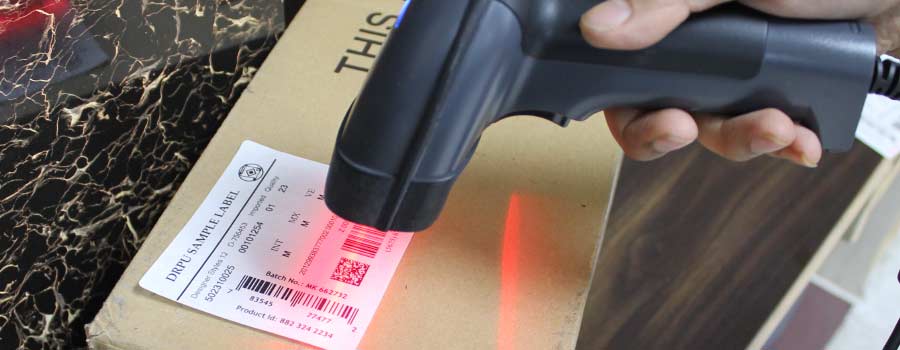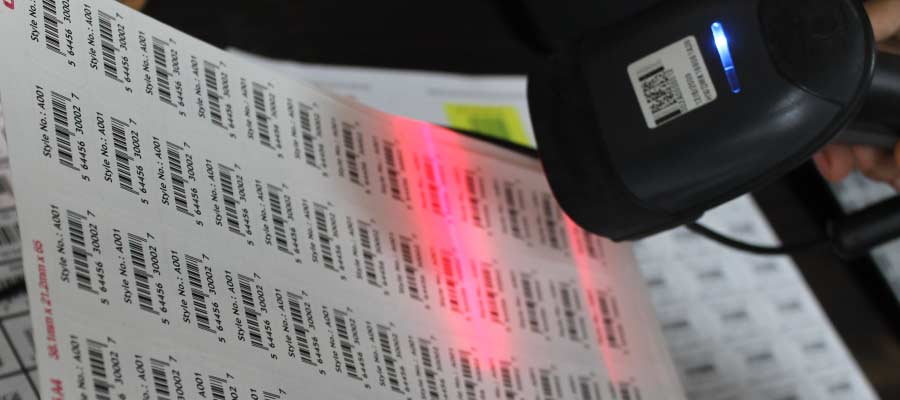Integrate Inventory Control Barcode Accounting Software
Integrating inventory control barcodes with other systems such as POS or accounting software can streamline your business processes and help you manage your inventory more efficiently. Here are some steps you can take to integrate barcode systems with other software:
-
Determine the data that needs to be shared between systems:
Identify the data that needs to be transferred between your inventory control system and other software, such as product descriptions, prices, and inventory levels.
-
Ensure that your software is compatible with barcode systems:
Make sure that your POS or accounting software is compatible with your barcode system and can receive and process the barcode data.
-
Test the integration:
Test the integration between your inventory management control application and other software to ensure that the data is transferred to the correctly and accurately that the systems are working together as intended.
-
Configure your software:
Configure your barcode softwareand configure to the Point of sale or accounting application to receive and process the barcode data, and set up any necessary mappings or transformations to ensure that the data is properly formatted.
-
Choose an integration method:
There are different methods for integrating barcode systems with other software, such as using APIs, file transfer, or direct database integration. Choose a method that is suitable for your business and the systems you are integrating.
-
Conduct regular inventory checks:
Conduct regular physical inventory checks to ensure that the number of items in your inventory matches the number of items recorded in your inventory management system. Use your barcode scanner to scan each item during the inventory check.
By integrating inventory control barcodes with other systems such as POS or accounting software, you can automate many of your business processes and reduce errors caused by manual data entry. This can help you save time and improve your overall efficiency.
Needs of Inventory Control Barcodes with Scanning Data
To scan inventory control barcodes, you will need a barcode scanner device that is compatible with the type of barcode used by your inventory system. Here are the steps you can follow:

Step:1 Identify the type of barcode used by your inventory control system. Common types include Code 39, Code 128, and Data Matrix.
Step:2 Purchase a barcode scanner device that is compatible with the type of barcode used by your inventory control system. You can find barcode scanners online or at electronics stores.
Step:3 Connect the barcode scanner to your computer or mobile device using a USB or Bluetooth connection.
Step:4 Open your inventory control software or app on your device.
Step:5 Aim the barcode scanner at the barcode on the inventory item and press the trigger button on the scanner to scan the code.
Step:6 The barcode scanner will read the code and send the information to your inventory control software or app, which will update the inventory count, location, and other relevant data.
Step:7 Verify that the inventory information displayed matches the item you are scanning and make any necessary adjustments to the inventory data.
The data obtained from scanning inventory control barcodes can be used to track inventory levels, monitor inventory movements, and optimize inventory management processes. By keeping accurate and up-to-date inventory data, businesses can avoid stockouts, reduce inventory carrying costs, and improve order fulfillment accuracy. Additionally, the data can be used to generate reports and analytics that provide insights into inventory trends, product demand, and other key performance indicators.
Choose a Inventory Management Barcode System
Integrating inventory barcodes with your inventory management system can help you streamline your inventory processes, reduce errors, and improve your overall efficiency. Here are some steps you can take to integrate inventory barcodes with your inventory management system:
-
Compatible Inventory
Management System:
Ensure that the barcode system you are using is compatible with your inventory software. Check with the software provider or documentation to see if they have any recommended barcode scanners.
-
Scan barcodes to update inventory data:
Use a barcode scanner to update inventory data and scan the barcodes on your inventory items. This will update the inventory data in your inventory management system application.
-
Set up your inventory system barcode
data:
Configure set up your inventory management application to accept and process the barcode data. This may involve mapping the barcode data to the appropriate fields in your inventory management software.
-
Generate barcodes inventory
Use a barcode to create barcodes for inventory items. Ensure that each barcode unique and corresponds to specific item in your inventory, allowing you to track inventory levels stock movements in real-time.
By integrating inventory barcodes with your inventory management system, you can automate many of your inventory processes and reduce errors caused by manual data entry. This can help you save time, improve your inventory accuracy, and make informed decisions about your inventory levels and stock movements.
Download and Install
Inventory Management Barcode SoftwareUses Of Inventory Control Barcodes Appliaction
To scan inventory control barcodes, you will need a barcode scanner device that is compatible with the type of barcode used by your inventory system. Here are the steps you can follow:

-
Step-1 Identify the type of barcode used by your inventory control system. Common types include Code 39, Code 128, and Data Matrix.
-
Step-2 Purchase a barcode scanner device that is compatible with the type of barcode used by your inventory control system. You can find barcode scanners online or at electronics stores.
-
Step-3 Connect the barcode scanner to your computer or mobile device using a USB or Bluetooth connection.
-
Step-4 Open your inventory control software or app on your device.Aim the barcode scanner at the barcode on the inventory item and press the trigger button on the scanner to scan the code.
-
Step-5 The barcode scanner will read the code and send the information to your inventory control software or app, which will update the inventory count, location, and other relevant data.
-
Step-6 Verify that the inventory information displayed matches the item you are scanning and make any necessary adjustments to the inventory data.
The data obtained from scanning inventory control barcodes can be used to track inventory levels, monitor inventory movements, and optimize inventory management processes. By keeping accurate and up-to-date inventory data, businesses can avoid stockouts, reduce inventory carrying costs, and improve order fulfillment accuracy. Additionally, the data can be used to generate reports and analytics that provide insights into inventory trends, product demand, and other key performance indicators.
Handle Damaged or Unreadable Inventory Barcodes
Damaged or unreadable inventory control barcodes can cause issues with your inventory management system and lead to inaccuracies in your inventory records. Here are some steps you can take to handle damaged or unreadable inventory control barcodes:
By taking these steps to handle damaged or unreadable inventory control barcodes, you can help ensure the accuracy and efficiency of your inventory management system.
